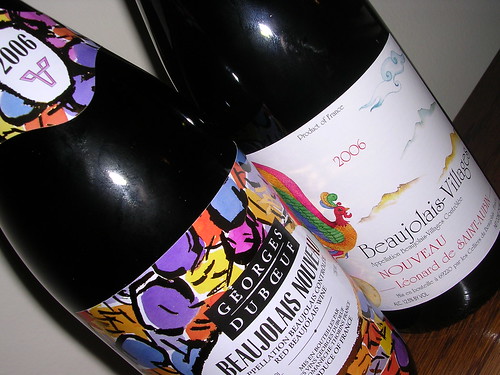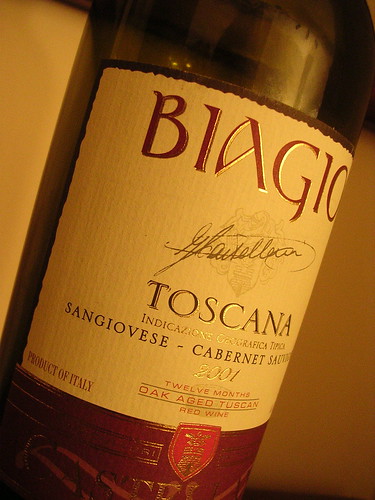The Oceanaire Seafood Room
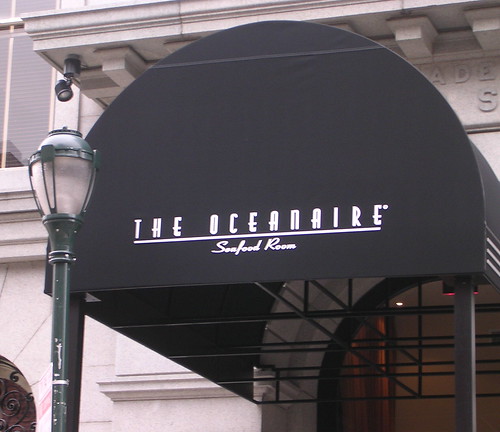
The Oceanaire Seafood Room is a rapidly growing, high-end seafood chain that just docked in the Washington Square section of Philadelphia. Oceanaire is a unique dining experience, a tribute to a bygone era. The atmosphere is that of a tasteful 1930s supper club aboard a luxury ocean liner—complete with grand Art Deco curves, cherry wood accents, comfy red leather booths, and big band music drifting through the air.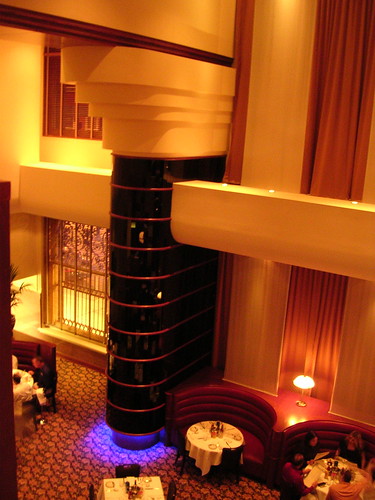
The service, too, is nothing short of first class. Even if you’re not a judge, or a doctor being wooed by a pharmaceutical rep, the staff at Oceanaire will make you feel just as important.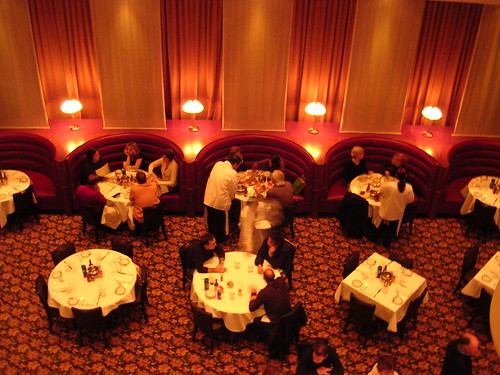
But as impressive as the décor and service are, they merely act as a backdrop to showcase the two concepts for which Oceanaire is notoriously famous. First, Oceanaire boasts that its fish is “Ultra-Fresh”—what you’re eating today was likely swimming in the ocean yesterday afternoon. The menu changes daily depending on market availability. Executive Chef Anthony Bonett is in his element; he spearheaded the late Opus 251’s market fresh approach.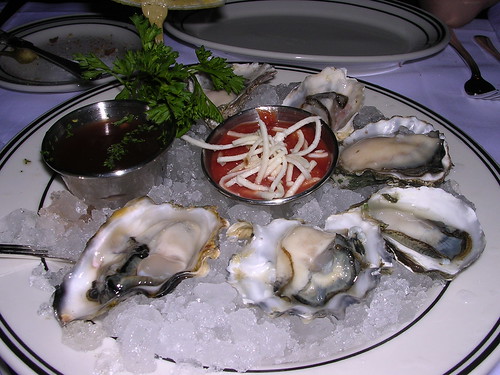
Given the obsessively high rotation of its inventory, you would be remiss if you didn’t experience Oceanaire’s raw oyster bar, which offers a bevy of bivalves from both coasts. We tried the Effingham, Kumamoto and Netart Bay ($2.10 per oyster). The Effingham were briny and a little sweet, the Kumamoto were rich and buttery, and the Netart Bay were also briny and mild.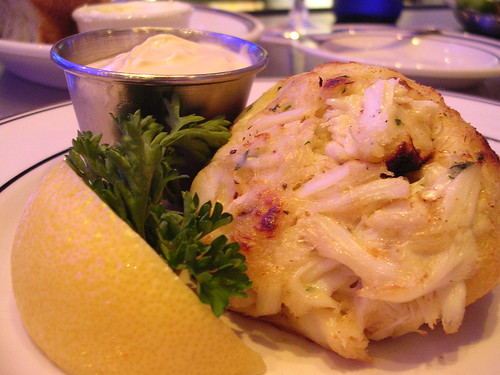
Another must-have is the Jumbo Lump Crab Cake ($13.50 as an appetizer, around $26 as an entrée). Each hulking crab cake is pure jumbo lump crab meat. There must be some small amount of filling holding it all together, but it’s virtually impossible to detect. The crab cakes are broiled and come with Oceanaire’s signature Mustard Mayonnaise, which adds an addictively rich, zesty kick.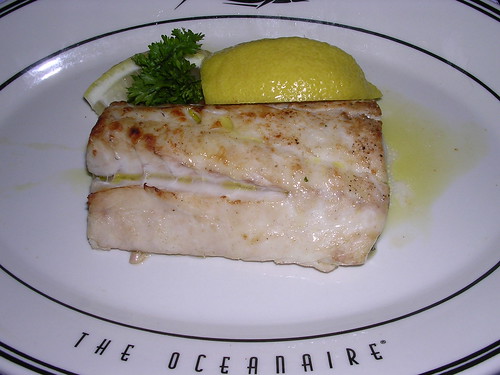
Oceanaire’s menu is vast, yet navigable. There are two ways to have the daily catches prepared: (1) simply grilled or broiled; or (2) as one of the chef’s daily specialties. My wife chose the Striped Sea Bass simply broiled ($25.95). From the first bite to the last, the uncomplicated preparation of this dish was a constant reminder of how fresh the fish really was.
While the Ultra-Fresh experience may be a lure for many fish lovers, others may see it as an anchor. Oceanaire’s fish dishes, even its specialties, are prepared in a way that highlights—or, at a minimum, does not overshadow or compete with—the freshness of fish. However, fish lovers looking for more celestial or sublime compositions may not always be wowed by this approach.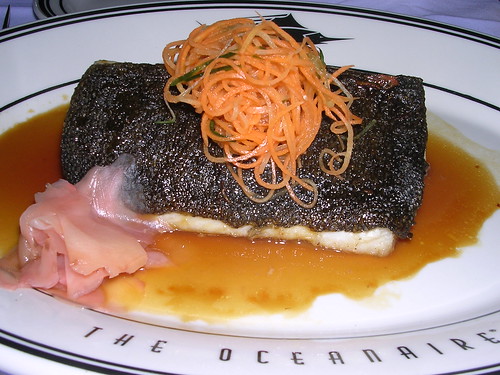
The Black Cod special, for example, was prepared with a light, delicate orange ginger sauce ($28.95). On another occasion I had the Mahi Mahi special, which was rubbed with Cajun spices and accompanied by a dollop of blue cheese ($23.95). The specialties were tasty and merit repeating. However, it would be interesting to see what the kitchen could do if it sailed into deeper waters.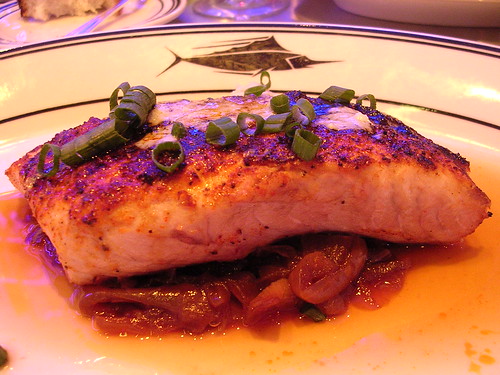
The second concept Oceanaire is famous for is that everything comes in only one size—titanic. The entrées are essentially double portions. The sides, which come a la carte, are so large that each one easily could feed a table of four. However, some of the sides (such as the roasted potatoes) are a little too simply prepared and could benefit from some creative chefing.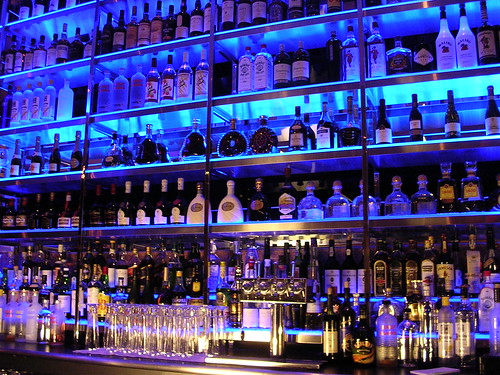
Oceanaire’s bigger-is-better mentality also carries through to the bar, making it a pearl for those hunting for an economical cocktail hour. A glass of 2005 Mark West Pinot Noir at Oceanaire will set you back $12 (only slightly more than other restaurants); however, you’re getting a generous double pour. Similarly, a Chopin martini costs $12.95, but it’s basically a double. It’s also worth noting that Oceanaire’s long, sleek metal bar and its neighboring curved wooden bar are perfect places for those who occasionally dine alone.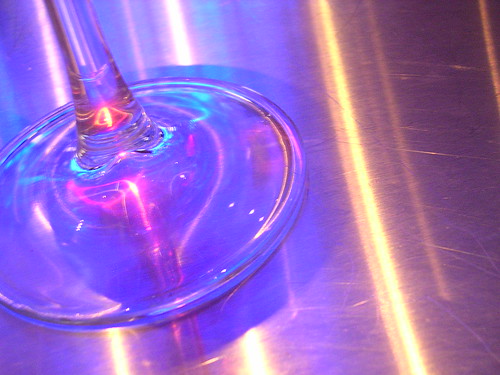
Oceanaire is among a small, elite group of Philadelphia restaurants that have earned Wine Spectator’s Award of Excellence—which means it has a well-chosen selection of at least 100 wines by quality producers and a thematic match to the menu in both price and style. Oceanaire has dozens of wines by the glass and even more by the bottle. There’s even a small selection of half bottles. Oceanaire also has a separate Captain’s List of wines, which has an impressive selection of hard-to-find bottles that hover in the triple digits.
Oceanaire’s Ultra-Fresh selections and gargantuan portions make it a Disneyland for fish lovers. One bite and you could be hooked.
The Oceanaire Seafood Room
700 Walnut Street
(215) 625-8862
